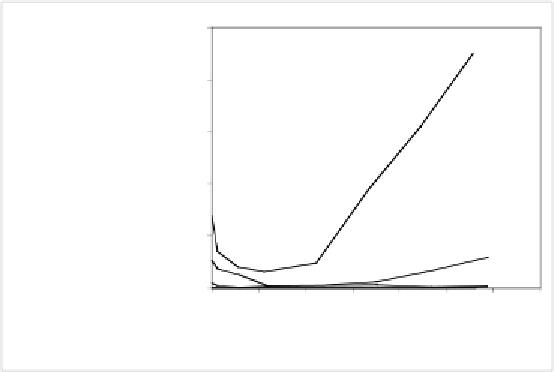Biology Reference
In-Depth Information
mark (Fig. 6.24). Compounds
84
,
85
and
86
produced no detectable
TNFα, whereas
83
induced only small amounts of the cytokine. As
expected, the most conservatively modified analogue
82
remained active,
as it produced approximately 1/3 of the amount of TNFα as the parent
81
. Thus, it appears that the core linker plays a decisive role in receptor
recognition, as any misorienting substitute linker greatly suppresses, and
even abolishes in some cases, TNFα secretion from hPBMC's compared
with the natural ellagitannin linker. Next, analogues
83
-
86
were tested
for their ability to promote secretion of IL-1β. The dimer
85
produced
high levels of this cytokine (2.110 ng/mL at 30 μM), while
84
was less
potent, but still active (0.690 ng/mL at 30 μM). Gratifyingly, the hPMBC
system was almost completely unresponsive to analogues
83
and
86
(< 0.250 ng/mL of IL-1β at 30 μM tannin) in this assay.
1.0
0.8
TNF
α
TNF
α
(ng/mL)
0.6
0.4
Analogue 82
Analogue 83
Analogue 84
Analogue 85
Analogue 86
0.2
0.0
0
5
10
15
20
25
30
35
tannin analogue (
μ
M)
tannin analogue (
μ
M)
Fig. 6.24 Dose-response profile for TNFα release from hPBMC's treated with the
dimeric tannin analogues
82
-
86
.
Each of these gallotannin analogues
83
-
86
was added at a range of
concentrations to hPBMC's that had been pre-treated for 45 minutes with
LPS in order to test whether these species could act as antagonists of
lipid A (Fig. 6.25). After 8 hours of incubation (a predetermined optimal
time period), compound
86
(at 23.5 μM) was found to be the least































































































